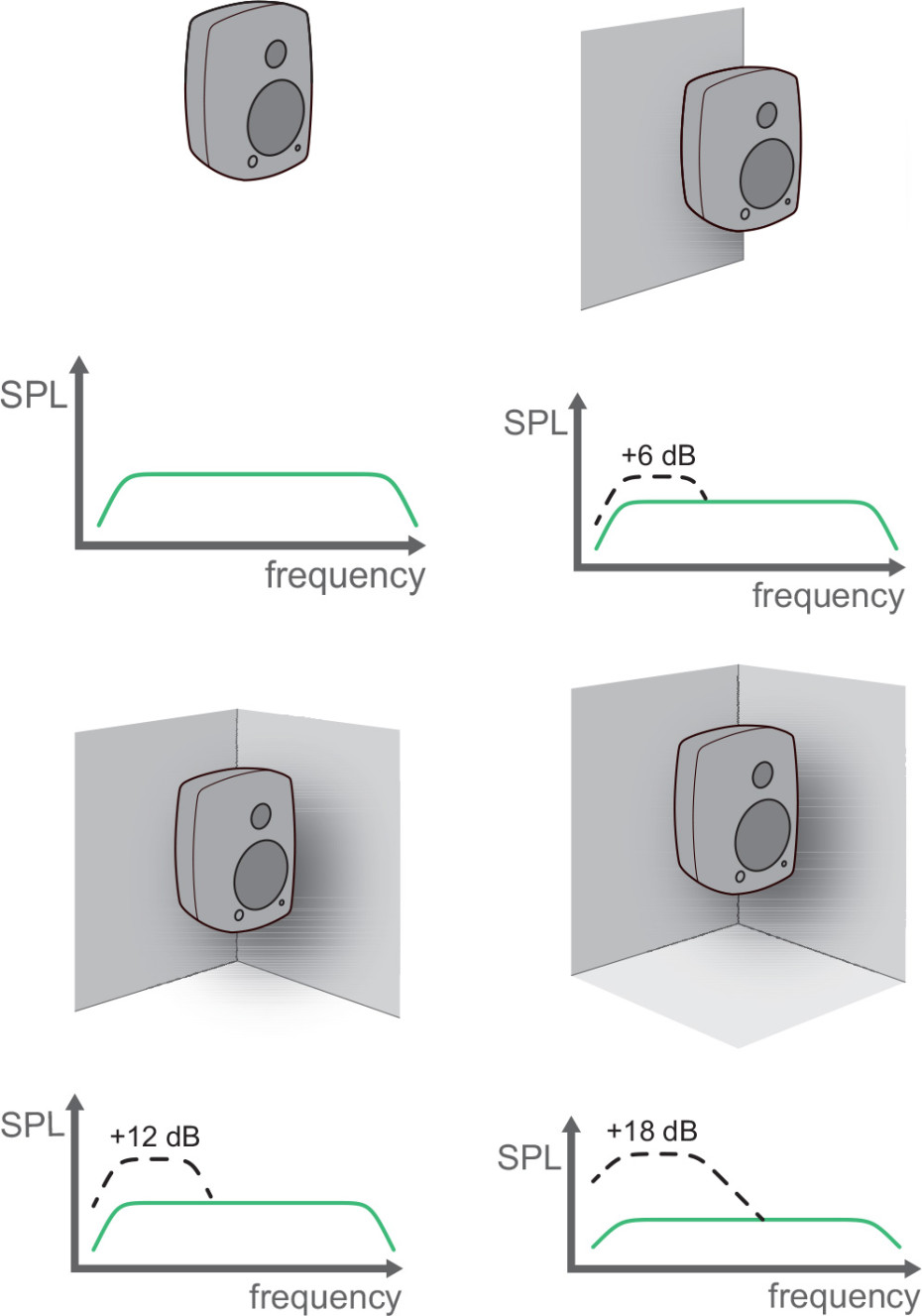I would just like to look at what some measurements from forum user look like.
So far it seems they will look like a sharp 6 db rise around 150Hz and flat after that, if the speaker is flat itself.
Ok, I will oblige your desire for measurements!
Be warned, I think this is going to be a lot more complicated and nasty looking than you expect...
(My setup is very much still a work in progress).
I have several identical satellite speakers (B&W M-1, Mk2, not popular here) each mounted differently, which gives the possibility of comparing different wall proximity situations.
The measurements are taken during Audyssey setup. They are the average of 8 mic positions (all of which are quite close to the rear wall, meaning that LBIR comes into play).
Least bass is generated by the front wide speakers (near a side wall)...
(X-over=90Hz, Level=+6.0dB)
Next highest bass is from the rear surrounds (near a corner)...
(X-over=60Hz, Level=+4.0dB)
Then the front height speakers (front wall mounted, near side wall and fairly near ceiling)...
(X-over=60Hz, Level=+4.5dB)
Finally, rear heights (right in a corner and close to the ceiling)...
(X-over=40Hz, Level=+4.5dB)
As you can see, the inherent speaker response isn't very flat anyway (Audyssey is working very hard). However, there are clear differences in the amount of bass, and therefore the auto detected frequency for crossover to the sub, depending upon wall proximity.
(Ignore any differences right of 1kHz, only the lower frequency differences are likely to be due to the proximity of the walls).
Edit: Sorry I compressed the photos which has caused aliasing artifacts on the grilles.

